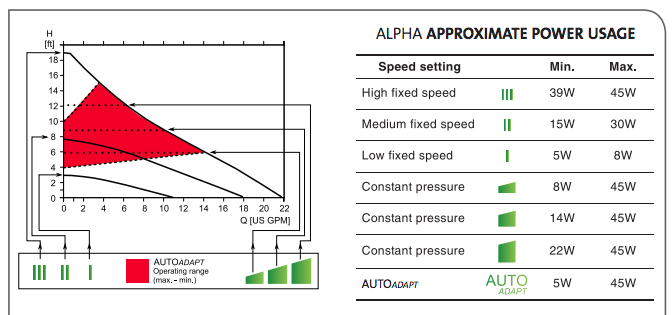babaji
New Member
Hello Guys,
First post , new to this, it's my first boiler. It's heating the radiant heat floor in my 3100 sq-ft warehouse. Simple Primary loop through a 12 port manifold.
Boiler is a NTI TFT-110 , had a plan made, contractors stuck to it for the most part. (ended up with an extra loop, and one slightly long loop at 320 ft')
I am finding it to be very enjoyable observing it learning about how it works.
A few bugs to be worked out, flame is weak on lowest modulation 1625 rpm, and the exhaust is sloping outwards dumping condensate outside. These will be looked at soon.
I seem to have some popping , hissing, gurgling noise at start up. From all the articles, forums posts and videos I have seem, leads me to believe I have a problem with the circulator fighting the expansion tank.
The remedy, i suppose is to move the circulator so that it is located downstream from where the expansion tank piping meets the discal air separator. I am hoping it is as simple as that.
On the other hand, some say it's better to leave the pump at the inlet before the boiler in the cold stream and re-route the expansion tank piping to the inlet side of the circulator.
I would love to hear some of your thoughts and recommendations on this issue or any other things that could be improved.
Something else i have wondered about, could the Dirt Mag be too close to pump inlet, causing any sort of turbulence for the pump? Haven't found any info about that online. (maybe it's a non issue)
Thanks
Scott
PS EWT is about 67 -70 degrees F seems kinda low, read that may be symptomatic of weak flow due to the pump being on the wrong side of PONPC.
HERE IS THE PIC
https://drive.google.com/open?id=1LoJeUOrdr51JujR0Q0zsFhwUeqnfb-rj
First post , new to this, it's my first boiler. It's heating the radiant heat floor in my 3100 sq-ft warehouse. Simple Primary loop through a 12 port manifold.
Boiler is a NTI TFT-110 , had a plan made, contractors stuck to it for the most part. (ended up with an extra loop, and one slightly long loop at 320 ft')
I am finding it to be very enjoyable observing it learning about how it works.
A few bugs to be worked out, flame is weak on lowest modulation 1625 rpm, and the exhaust is sloping outwards dumping condensate outside. These will be looked at soon.
I seem to have some popping , hissing, gurgling noise at start up. From all the articles, forums posts and videos I have seem, leads me to believe I have a problem with the circulator fighting the expansion tank.
The remedy, i suppose is to move the circulator so that it is located downstream from where the expansion tank piping meets the discal air separator. I am hoping it is as simple as that.
On the other hand, some say it's better to leave the pump at the inlet before the boiler in the cold stream and re-route the expansion tank piping to the inlet side of the circulator.
I would love to hear some of your thoughts and recommendations on this issue or any other things that could be improved.
Something else i have wondered about, could the Dirt Mag be too close to pump inlet, causing any sort of turbulence for the pump? Haven't found any info about that online. (maybe it's a non issue)
Thanks
Scott
PS EWT is about 67 -70 degrees F seems kinda low, read that may be symptomatic of weak flow due to the pump being on the wrong side of PONPC.
HERE IS THE PIC
https://drive.google.com/open?id=1LoJeUOrdr51JujR0Q0zsFhwUeqnfb-rj


